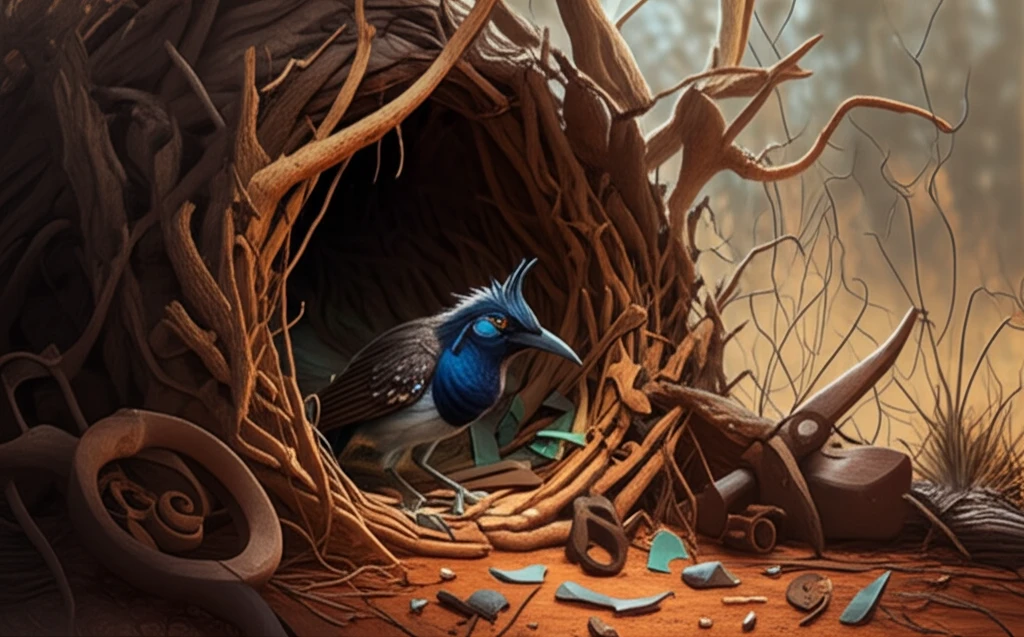
Bowerbird Architects: How These Avian Artists Are Reshaping Archaeology
"Uncover the surprising role of Australian Great Bowerbirds in transforming archaeological sites, blending nature and history in unexpected ways."
The Australian Great Bowerbird, Chlamydera nuchalis, is renowned for its extraordinary courtship behavior. Male bowerbirds construct elaborate 'bowers,' which are essentially enclosed structures made of woven sticks and pebbles. These avian architects meticulously decorate their bowers with bright, shiny objects to attract a mate. These bowers serve not only as shaded retreats but also as stages for the males' intricate courtship dances.
Recently, an intriguing discovery was made during an archaeological survey of the Wenlock Goldfields, located on the boundary of the Northern Kaanju Indigenous Protected Area in Cape York, Queensland. An elaborate bower, constructed by a Great Bowerbird, incorporated a substantial number of colonial-era artifacts. This finding supports previous research suggesting a connection between the unique mating behavior of C. nuchalis and systematic site disturbance.
This article explores the intersection of bowerbird behavior and archaeological interpretation, drawing parallels between site disturbances caused by bowerbirds in both pre-colonial and colonial-era settings. By examining how these avian collectors redistribute artifacts, we gain new insights into the taphonomic processes shaping archaeological landscapes.
The Bowerbird's Taphonomic Touch: How Avian Collectors Reshape Archaeological Sites

Taphonomy, derived from the Greek words 'taphos' (burial) and 'nomos' (law), initially referred to the study of fossilization processes in paleontology. In archaeology, taphonomy examines the processes that affect organic remains after deposition, including natural disturbances and animal activity. In the context of bowerbirds, taphonomy helps us understand how their collecting habits alter the distribution and interpretation of artifacts within archaeological sites.
- Dwyer et al. (1985): Focused on stone artifacts collected and placed into bowers, leading to potential misinterpretations of artifact density.
- Solomon et al. (1986): Showed that C. nuchalis uses bones from various animal species to furnish bowers, which can complicate faunal analysis.
- Powell (2008): Discussed the collection of glass Kimberly points by bowerbirds, contributing to the scarcity of these artifacts in nearby Indigenous surface sites.
Bowerbirds: Unintentional Guardians of Archaeological Sites
This study underscores the significant role of C. nuchalis as a taphonomic agent in both pre-colonial and colonial-era sites. The bowerbirds' preference for specific object sizes (20mm-40mm) highlights a consistent selection bias that can influence artifact distribution. Ironically, the construction of bowers within colonial-era sites may inadvertently protect certain archaeological elements that would otherwise be lost to environmental disturbances. Even if the primary context of artifacts is disrupted, their presence within a bower provides a traceable provenance.
